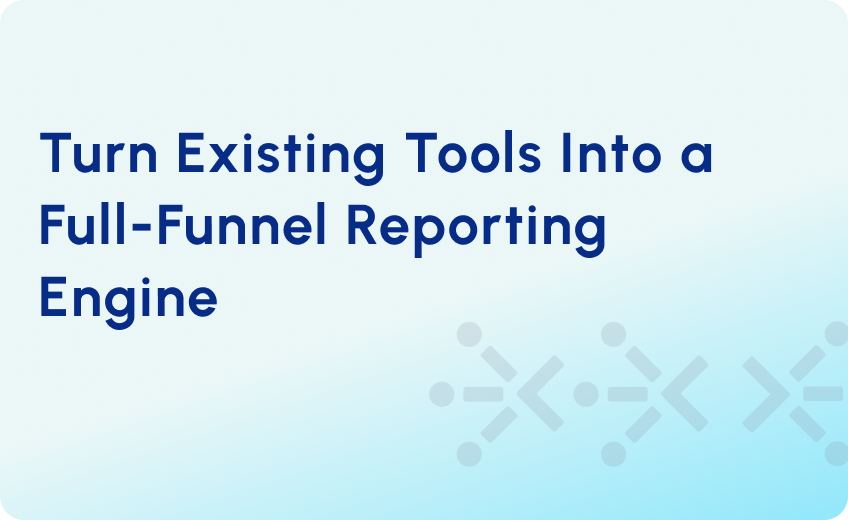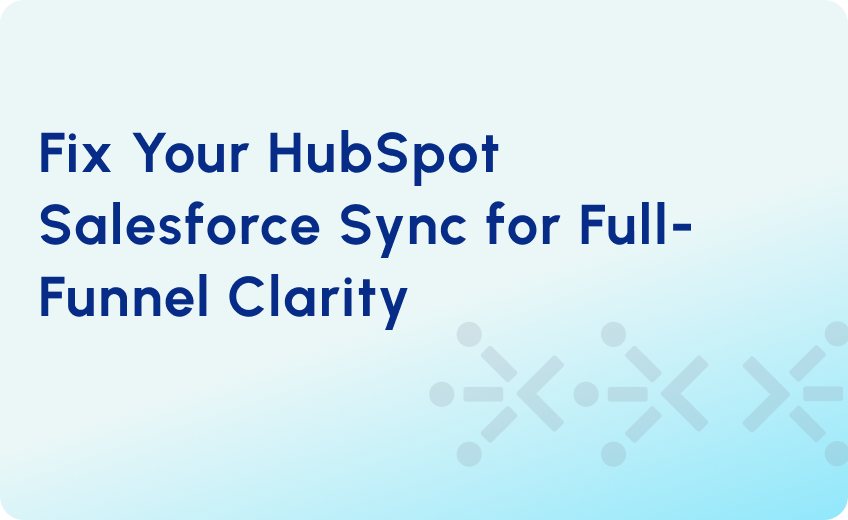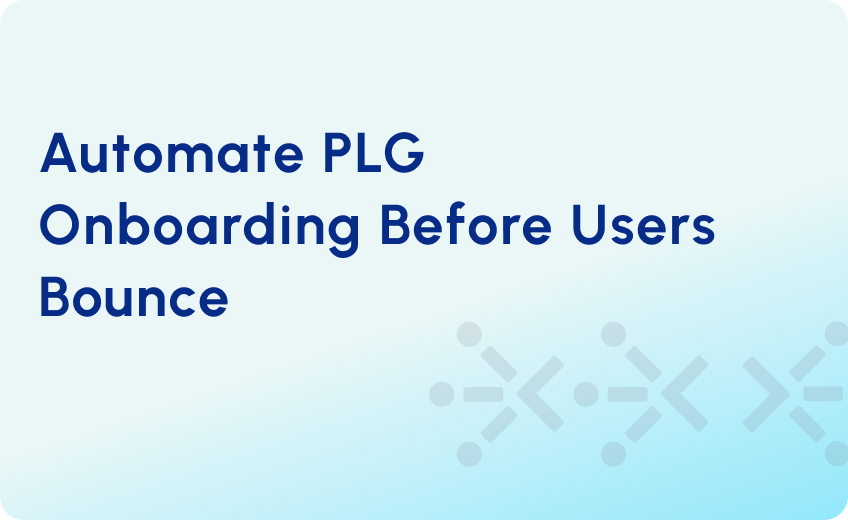
Modern Contact Roles: A New Framework for Unlocking Sales Velocity
An opportunity is sitting in the pipeline. You’ve had a few great calls, engagement looks solid—but then… nothing. The deal stalls, and no one’s quite sure why.
Often, it’s not the product, the pricing, or even the pitch. It’s that you’re not talking to the right people—or all of them.
B2B buying has changed drastically. What used to be a clean handoff from influencer to decision maker is now a team sport. Champions, technical evaluators, budget owners, and end users all shape the deal and often at the same time.
Yet in Salesforce, many teams still rely on outdated contact roles like “Decision Maker” or “Influencer,” added at the very end of the cycle (if at all). That’s a huge miss.
In this article, we’ll show you how to:
- Rethink contact roles as functional, evolving personas.
- Use engagement signals and automation to build buying groups earlier.
- Unlock better pipeline insights and faster deal velocity by modernizing your Salesforce setup.
Why Traditional Contact Role Models Fall Short
The standard contact roles like “Decision Maker” or “Influencer” are too broad and rarely match how buying groups actually operate. They don’t reflect how modern buying decisions actually happen. Sales reps often skip filling them out altogether, either because they’re not sure who fits where, or they simply don’t have time during a fast-moving deal.
Because of all these reasons, the data in your CRM becomes shallow. Without clear roles assigned early, RevOps leaders lose visibility into who is engaged and who is missing from the buying group. This impacts forecasting accuracy, deal strategy, and ultimately win rates.
For Sales teams, managing complex opportunities, incomplete contact role data means missed buying signals and limited reporting insights.
A Modern Framework for Contact Role Segmentation
In B2B sales, deals no longer move forward based on a single decision maker or a clear hierarchy of influence. Instead, buying groups have become fluid and cross-functional.
An opportunity might start with a product manager doing research, involve IT for technical validation, and require finance and legal for final approvals. These stakeholders don’t always follow a set sequence, and their involvement can overlap or evolve as the deal progresses.
Because of this, relying on job titles alone in CRM is no longer enough. A contact’s title might say VP of IT, but their role in the deal could shift between technical validator, executive sponsor, or even risk gatekeeper depending on the stage or discussion. Job titles describe the person’s position in the company but do not always reflect how they are engaging in the buying process.
This is why modern RevOps and sales teams need a new approach. Instead of asking “What is their job title?”, the better question is “How are they involved in this opportunity?”
For a deeper dive into buying group strategy, download our free guide: A Guide to Buying Group Optimization in Salesforce. Learn how to structure, automate, and report on buying groups for scalable revenue growth.
Modern Role Types for Modern Buying Groups
This framework segments contacts by function in the buying process rather than by their title:
| Role Type | Description | Modern Behavior Indicators |
| Initiator | The first point of engagement with your solution | Sign-up, content download, inbound inquiry |
| Evaluator | Actively exploring fit and features | Attends demos, asks product questions |
| Validator (Business/Tech) | Validates solution fit within team/process/stack | Sends follow-up questions, joins technical deep-dives |
| Collaborator | Works closely with the Champion or Evaluator to shape needs or requirements | Participates in shared docs, async feedback |
| Economic Approver | Final budgetary sign-off, often executive | Appears late stage, views proposal, comments on ROI |
| Buying Group Orchestrator | Coordinates internal stakeholders, project manager type | Sends meeting invites, shares internal updates |
| End-User Advocate | Represents daily users’ POV on workflows | Highlights pain points, engages in trials/sandbox |
| Compliance Gatekeeper | Owns risk/security/legal evaluation | Requests DPA, reviews InfoSec docs |
| Post-Sale Stakeholder | Drives internal onboarding and adoption | Appears late in process, schedules onboarding kickoff |
How to Identify Roles Beyond Titles
The key to identifying these roles in CRM is looking at behavior and engagement, not just titles. Here are a few ways RevOps and sales teams can map roles more accurately:
- Track meeting attendance to see who shows up for technical reviews, executive briefings, or contract negotiations.
- Monitor email engagement, including who opens and replies to follow-ups.
- Watch for content engagement like downloading key documents (security reviews, financial models, legal agreements).
- Use department and seniority as supporting context, not the sole factor. A senior manager in procurement joining late-stage conversations could be more critical to closing the deal than a director who has been silent.
- Pay attention to objections or blockers. The person raising compliance concerns could be your risk gatekeeper, even if their title does not suggest it.
Roles should be updated throughout the sales process as new information comes in. The goal is to maintain an accurate map of the buying group in Salesforce, which helps sales teams engage the right stakeholders at the right time.
Automating Contact Role Assignment Based on Behavior
Manually assigning contact roles in Salesforce often feels like a tedious task. For most sales teams, it happens late in the process, if at all. This delay leads to incomplete data and missed insights about who is really involved in the deal.
In a modern sales environment, manual tagging is no longer effective. Contact Roles need to be updated in real-time, based on how contacts are engaging with your sales and marketing efforts.
This is where automation makes a significant difference.
Automating role assignment with RevOps Global’s Buying Group Automation
RevOps Global offers a Salesforce-native solution that automates the creation and assignment of contact roles on opportunities. Rather than waiting for sales reps to manually add contacts and assign roles, the system uses predefined rules to handle this automatically.
The automation uses a combination of:
- Campaign engagement, such as webinar attendance or asset downloads.
- Activity history in Salesforce, including meeting participation and email responses.
- Firmographic details, like department or job level.
- Opportunity context, such as deal stage or opportunity type.
Automating Opportunity Contact Roles helps keep your contact role data current and reflective of actual buyer behavior. As the opportunity progresses, the automation updates roles or adds new contacts as engagement patterns shift.
How Role Coverage Drives Sales Velocity and Confidence
Engaging the full buying group early is key to avoiding late-stage surprises. When sales teams connect with the right mix of decision-makers, influencers, and gatekeepers upfront, they can:
- Accelerate deals by surfacing and resolving concerns early
- Tailor messaging to each stakeholder’s priorities
- Prevent delays from last-minute blockers like legal or finance
- Align internal stakeholders before the final decision
Reporting metrics for role-based pipeline health
Once role assignment is automated and buying groups are properly mapped, measuring role coverage and analyzing its impact is just as important
Here are the key metrics to monitor:
| Metric | Why It Matters |
| % of Opps with full buying group mapped | Ensures all critical functions are engaged |
| Avg. roles per contact per opportunity | Indicates stakeholder depth and buying complexity |
| Gaps in role coverage by stage | Highlights missing stakeholders before deals progress too far |
| Win rate by role composition | Reveals which combinations contribute to success |
| Marketing attribution by contact role | Shows who was influenced by which campaigns |
| Sales velocity vs. completeness of role coverage | Correlates faster closes with robust stakeholder mapping |
Getting Started with Modern Contact Role Strategy
Adopting a modern contact role strategy doesn’t have to be complicated. Start with these steps to lay the foundation for better buying group engagement and stronger pipeline performance:
- Redefine contact roles to reflect real engagement and influence, not just job titles.
- Use behavioral signals and firmographic data, like meeting participation, asset downloads, and department function—to assign roles accurately.
- Automate role tagging in Salesforce with RevOps Global’s Buying Group Automation to keep roles current without relying on manual updates.
- Monitor role coverage with dashboards and set alerts when key roles like executive sponsor or risk gatekeeper are missing from opportunities.
- Train your GTM teams to interpret role-based engagement in CRM, so outreach and strategy align with stakeholder needs at every stage.
Ready to modernize your contact role strategy? Book a 1:1 strategy session to see Buying Group Automation in action.




